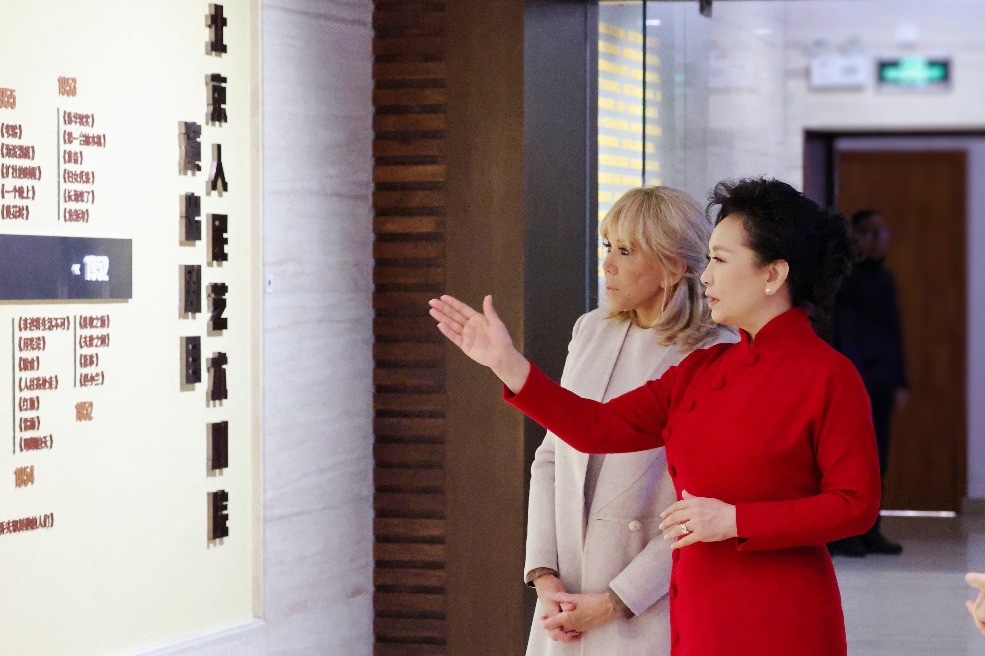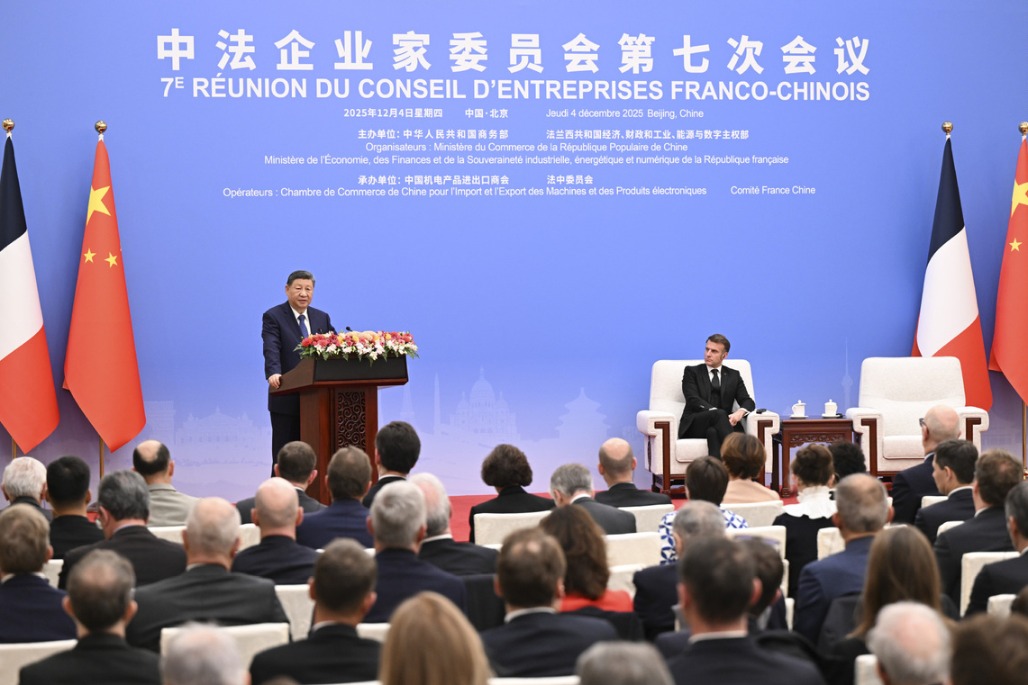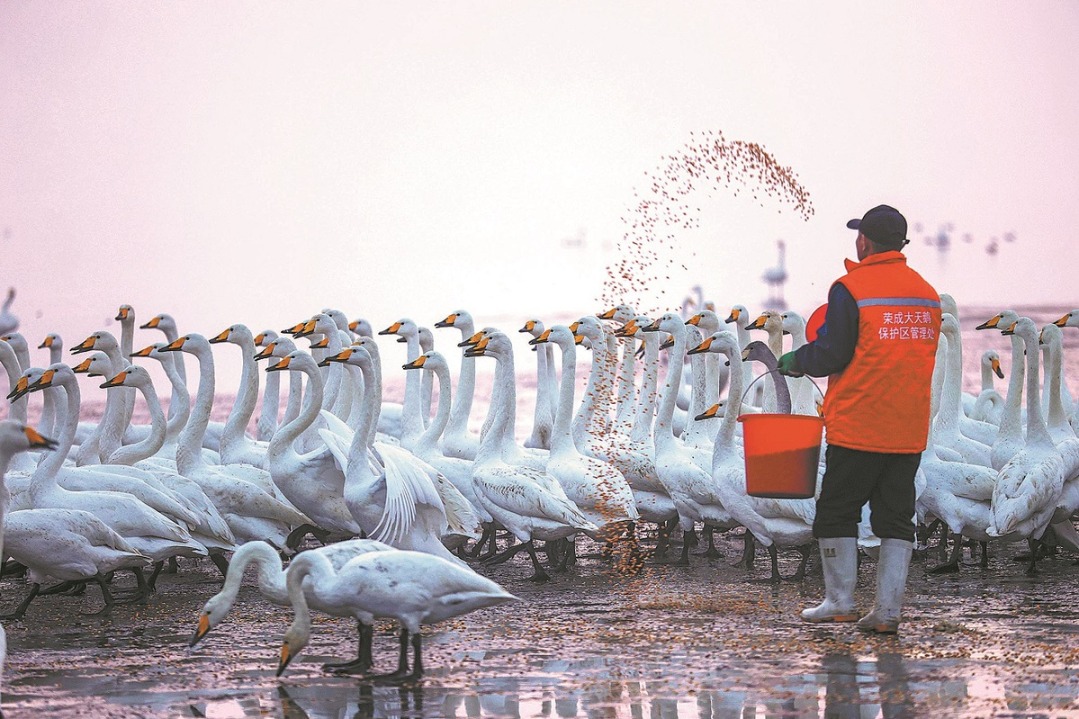Qing empresses' daily lives on display
By Zhao Huanxin in Washington | China Daily | Updated: 2019-04-03 09:30

Major exhibition showcases opulence, influence of imperial women in China's last dynasty
A young woman gazes into a mirror, her slender hands fitting an ornate hairpin into her elaborate coiffure. She adds jewelry intricately shaped as a butterfly and flower, even as a maid nearby extracts a book from a shelf.
It is a glimpse into the daily routine of an empress from China's last dynasty, the Qing (1644-1911). The life-size depiction, painted in the second half of the 18th century, is on display at the Freer Gallery of Art and Arthur M. Sackler Gallery in Washington.
The painting, which embraces the dual virtues of the ideal empress -beauty and erudition - is one of nearly 135 objects made for, by and about the Qing emperors' ladies, on view in the United States capital till late June.
Most of the objects come from the Forbidden City, also known as the Palace Museum, in Beijing. Some of the artworks are being exhibited for the first time in the US.
"I've worked for nearly four years on the exhibition Empresses of China's Forbidden City, 1644-1912," Jan Stuart, curator of Chinese art at the galleries, told China Daily.
"We are thrilled to be able to shine a spotlight on the previously understudied realm of the Qing empresses and help people understand their complex and dynamic roles at court."
Organized jointly by the galleries, the Palace Museum and the Peabody Essex Museum in Salem, Massachusetts, the show is part of an array of activities celebrating the 40th anniversary of the establishment of China-US diplomatic relations.
Through imperial portraits, narrative paintings, furnishings, jewelry, costumes and religious art, the exhibition reveals and fills in little-known details about the world of the enigmatic imperial women. It shatters the stereotypes by showing the empresses' influence in multiple spheres, including religion, art and politics, according to a museum press release.
One of the exhibits features a small jade massage roller, used by the court ladies to enhance their complexion. Dressing well and adding enhancements such as jewelry were considered expressions of conjugal devotion, and the wife's duty to please the emperor and attract his attention in the hopes of bearing a son, Stuart said.
The show focuses on five of the two dozen or so Qing empresses: Xiaozhuang (1613-1688), Chongqing (1692-1777), Xiaoxian (1712-1748), Ci'an (1837-1881) and Cixi (1835-1908).
A centerpiece of the exhibit is an 80th birthday portrait of Empress Dowager Chongqing, mother of Emperor Qianlong, who is known to have showed his mother deep filial devotion, presenting her with an enormous amount of treasures as birthday gifts and striving to visit her every day, often to take her counsel.
The fact that empresses were able to compose poetry and read in their leisure, and that an emperor would at times go to his mother or his wife to discuss weighty matters of state, "helps us understand that these women were educated, they were thinkers", Stuart said.
It was important for the Qing Dynasty rulers to maintain their own Manchu ethnic heritage, but at the same time demonstrate to the population that they understood, assimilated and followed the most crucial Chinese values, including respect for one's parents and elders, she said.
"So, with these objects, it is our hope that people will take away an understanding of what the general obligations, expectations and successful accomplishments were of the Qing empresses, and take away a love for Chinese art," Stuart said.
























